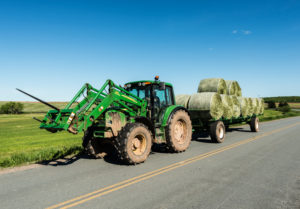In 2017, there were 42 crashes, in Oregon, involving farm equipment. There were 32 non-fatal injuries and one death, according to the Oregon Department of Transportation (ODOT). Last year, the Oregon legislature passed the Rural Oregon Achieving Driving Safety (aka ROADS) Act to establish a pilot program for creating safety corridors on county roads. Summer is a busy time for Oregon farmers, and you can expect to see farm equipment on rural roadways, highlighting the significant involvement of the agriculture sector. Learn how to share the road safely. If you have been injured in a motor vehicle accident involving farm equipment, the Law Office of J. Clay McCaslin can help.
Regular repair and maintenance services for agricultural equipment are crucial to ensure safety on rural roads.
Understanding the Risks of Agricultural Equipment on Rural Roads
Agricultural equipment can pose significant risks to drivers on rural roads, especially during peak farming seasons. The large size and slow speed of these vehicles make them challenging to maneuver and can increase the likelihood of accidents. According to the National Highway Traffic Safety Administration (NHTSA), there were over 1,800 crashes involving farm equipment on public roads in the United States in 2020, resulting in 122 fatalities.
The risks associated with agricultural equipment on rural roads are multifaceted. For instance, farm equipment can be difficult to see, particularly at night or in low-light conditions, as they may not have the same level of lighting as other vehicles. Additionally, the slow-moving nature of this equipment can make it hard for other drivers to anticipate their movements. Furthermore, the width of farm equipment often extends beyond the edges of the road, complicating safe passing.
To mitigate these risks, drivers should exercise caution when sharing the road with agricultural equipment. This includes reducing speed, increasing following distance, and being vigilant about the presence of farm machinery on the road. Farmers and agricultural workers can also contribute to safety by ensuring their vehicles are well-maintained and equipped with safety features like lights and reflective tape.
Sharing the Road with Farm Equipment
Sharing the road with farm equipment requires a blend of caution, patience, and understanding. Drivers should be mindful of the presence of farm machinery on rural roads and take steps to minimize associated risks. Here are some key practices:
- Reducing Speed: Slow down when approaching farm equipment, as these vehicles are often slow-moving and difficult to maneuver.
- Increasing Following Distance: Maintain a greater following distance when behind farm equipment, as these vehicles can be wide and may extend beyond the road’s edges.
- Being Aware: Stay alert to the presence of farm equipment, especially during peak farming seasons.
- Using Caution When Passing: Exercise caution when passing farm equipment, ensuring there is ample space to do so safely.
- Respecting Farmers’ Rights: Show respect for farmers and agricultural workers by avoiding aggressive behaviors like honking or tailgating.
By adopting these practices, drivers can help reduce the risks associated with agricultural equipment on rural roads, fostering a safer and more respectful driving environment.
Wide Turns in Transportation
It’s true that farm equipment operators will sometimes pull over or partially pull over to let drivers pass their large, slow-moving vehicles more easily. But just because you see farm equipment move to the right, don’t assume they are making room for you. Watch for hand signals and other signals that can alert you to what they’re really up to.
Having the right parts is crucial for the equipment to function properly. Farm equipment often has to make wide left-hand turns, meaning they pull first to the right before turning left. Due to the nature of the equipment, operators may not be able to see you and may not know you are there at all. That is one of many reasons to give them plenty of room and move slowly around this large machinery.
Loaders, as part of farm equipment, require careful maneuvering during wide turns.
Wide Agricultural Equipment
Some farm equipment is wider than a lane of traffic or has implements that take up extra space. Drivers are asked to yield to wide farm equipment. If you see it coming in the oncoming lane, and there is not room for both of you, stop and pull over so the farm equipment can pass by safely. Some of this equipment is used for greenhouses and hay production, which can be particularly wide and require extra caution.
When passing wide farm equipment going in the same direction as you are, make sure that you have plenty of space to pass. You may have to wait it out. Manifolds play a crucial role in the functionality of such wide farm equipment, ensuring efficient operation across various applications.
If you or someone you love has been injured in a motor vehicle accident involving farm equipment, as the occupant of a passenger vehicle or as a farm equipment operator, call the Law Office of J. Clay McCaslin at 503-239-1910 or contact us online right away to schedule your free consultation.


